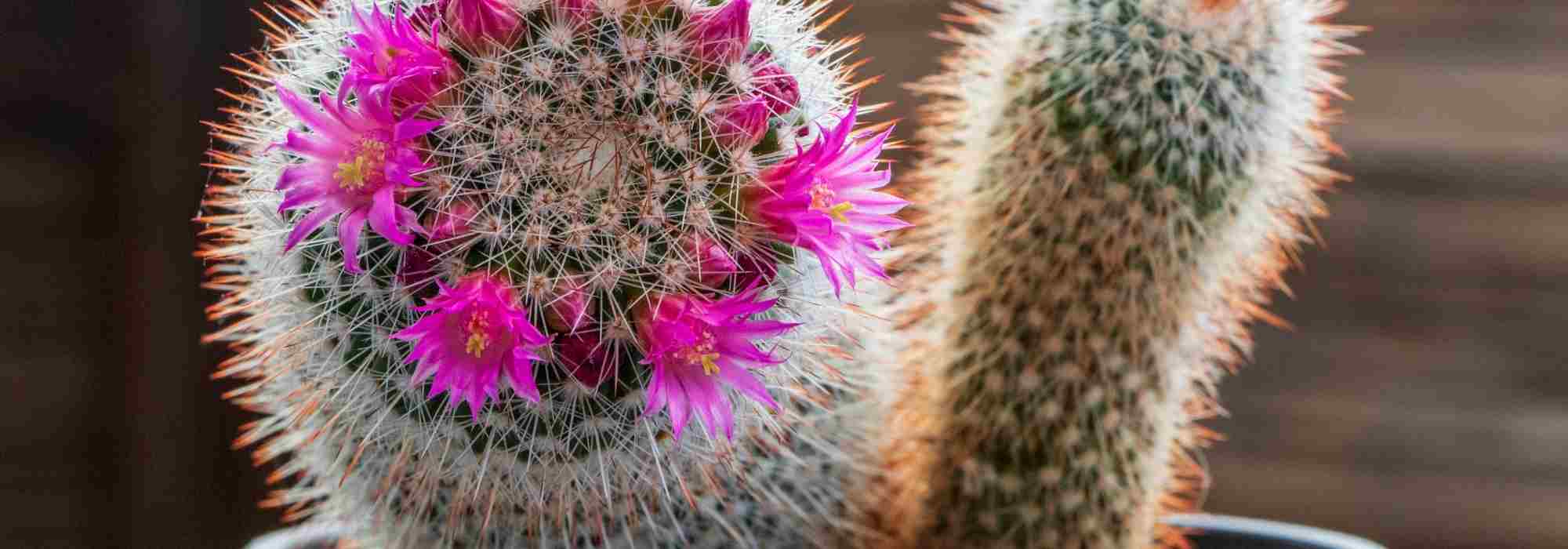
Getting Cacti to Flower: Our Foolproof Solutions and Tips
Our tips to get your cacti covered in colourful flowers
Contents
Cacti are enjoying growing popularity, to the point that the range is expanding considerably. It must be said that these cacti are undemanding while being original with their varied shapes. Perfect for exotic or more contemporary settings, cacti are plants from deserts and arid areas that adapt very well to the atmospheric conditions of our homes. Others, more hardy, can thrive outdoors in regions with a mild climate. Mainly prized for their original shapes, cacti can also offer wonderful flowering. Provided they are given a few essential growing conditions.
Discover how to make cacti flower reliably, and which are the most floriferous cacti.
→ To go further: Indoor Cacti and Succulents: Growing and Care
What are the essential needs of cacti?
There are hundreds of species of cacti, most of them bristling with prickles that protect them from herbivores in the arid regions where they grow. But these thorns serve other functions too: they shield them from ultraviolet rays, mitigate the drying effect of winds, and channel dew towards the areoles. While these spines may not be particularly useful indoors, it is nonetheless essential to recreate the climatic conditions of their native habitat to grow truly beautiful cacti.
Relatively easy to grow indoors, cacti still require a few essential conditions. Only then will they thrive and reward you with the exceptional beauty of their flowering:
- A suitable container and substrate: the choice of pot and substrate is crucial, as they must ensure perfect drainage. A terracotta pot with drainage holes is ideal due to its porous nature. As for the substrate, it should be well-draining, porous, light, and slightly fertile. A special cactus compost replicates the natural conditions of these succulent plants, but you can also use a mix of repotting compost, sand, and vermiculite.
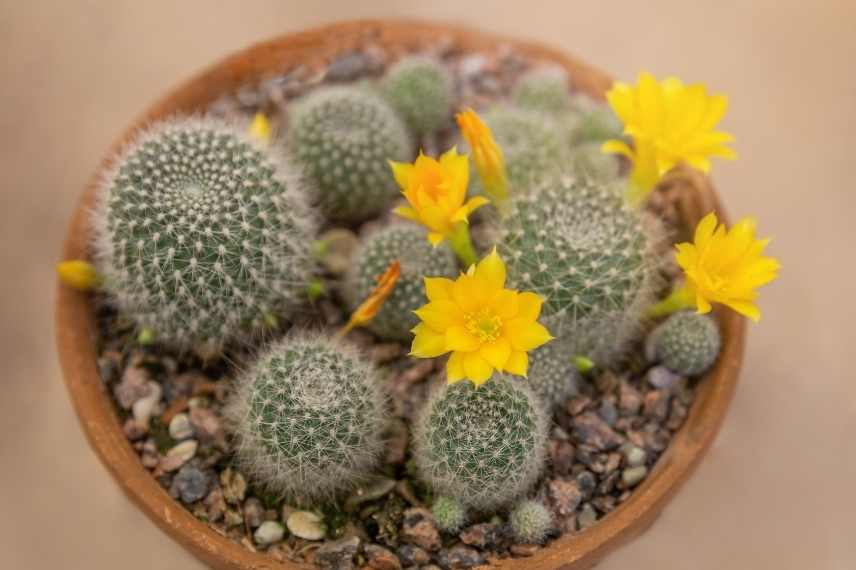
A lovely Rebutia in full bloom
- Moderate but regular watering during the growing season, about once a week. The substrate must dry out completely between waterings, and any excess water should be removed to prevent root rot. During dormancy, watering should be significantly reduced or even stopped.
- Optional fertilisation during the growth period, in spring and summer, using a special cactus fertiliser
- Warmth and light: due to their desert origins, cacti need good sun exposure, but not excessively so, as sunlight through a window can scorch their foliage.
- Strict wintering in a cool, dry room: winter dormancy is crucial for the well-being of cacti and their flowering.
Which are the most floriferous cactus species?
Around 70% of the most common cacti in our homes are capable of flowering in our latitudes. However, not all are equal when it comes to flowering. Some produce ephemeral flowers, while others bear long-lasting inflorescences, with flowering spread over several months. Additionally, flowering depends on the species—some cacti produce their first flowers after just a few months of cultivation, while others may take several years, such as Opuntias, which can make us wait up to 10 years before rewarding us with blooms. The age of the plant and its sexual maturity also play a role, not to mention growing conditions.
Generally, flowering occurs from early spring, around April, until early autumn in September.
That said, several cacti are known for flowering easily. Broadly speaking, globular species are the most likely to bloom.
- The Mammillaria: This genus includes numerous species, most native to Central America. Some are robust houseplants. The flowers appear between bristly, prickly projections, forming a crown at the stem tips, followed by oblong, often orange-red fruits. Depending on the species, flowers may be pink, deep red, white, pale yellow…
- The Rebutia: A small plant native to the Andean plateaus, between 2,000 and 3,000 metres in altitude. Flowers appear between April and June, producing seed-rich fruits. Blooms range from yellow, orange, red, to purple depending on the variety. Rebutia marsoneri, highly floriferous, bears yellow flowers, while Rebutia heliosa forms a clump topped with orange blooms.
- The Echinopsis: A genus of cacti with dark green stems, either flattened globular or slightly columnar, with sharp spines along the ribs. Many species flower in white, while others bear bright yellow, orange, red, or carmine blooms.
- The Parodia: A genus of cacti with strikingly pure flowers. Large red, orange, or yellow blooms cluster at the stem’s apex.
- The Astrophytum myriostigma or bishop’s cap is an inermous species dotted with fuzzy areoles. Yellow flowers appear and succeed one another at the plant’s crown.
- The Gymnocalycium is a genus of flattened, inermous globular cacti. In summer, buds form at the plant’s centre, opening into fleshy flowers.
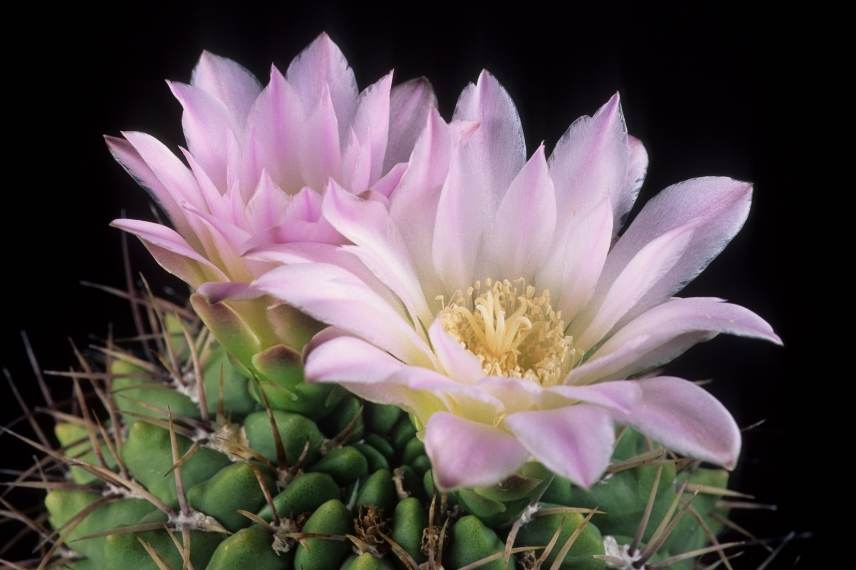
Gymnocalycium flowers
- The Ferocactus or barrel cactus flowers less frequently in temperate climates, requiring ample sunlight and nutrients.
- The Echinocereus or hedgehog cactus often grows as short columns. They, too, need abundant sunlight to flower.
- The Opuntia or prickly pear can be grown outdoors. The only variety suitable indoors is Opuntia microdasys, featuring small pads devoid of spines but densely covered in golden-yellow glochids. Flowers are yellow but rare indoors.
How to make a cactus flower indoors?
To have a chance of seeing an indoor cactus flower, it is essential to recreate the plant’s natural cycle and the specific conditions of the geographical areas where they live. Given that most originate from desert environments.
This natural cycle relies on several stages:
- In autumn and winter, the cactus must enter dormancy, meaning winter or vegetative rest. This is a crucial step to hope for a flower to bloom. Practically, during this period from October to March, your cactus should be placed in a cool, bright room, free from any humidity. Ideally, temperatures should range between 5 and 10°C. Unheated conservatories, glasshouses, or bright garden sheds are perfect for this wintering. If you live in a mild climate, the least frost-sensitive cacti can be placed outdoors, sheltered from bad weather, under an awning or overhang. They must absolutely be kept dry. During this vegetative rest, your cactus receives no watering, as it has stopped its growth.
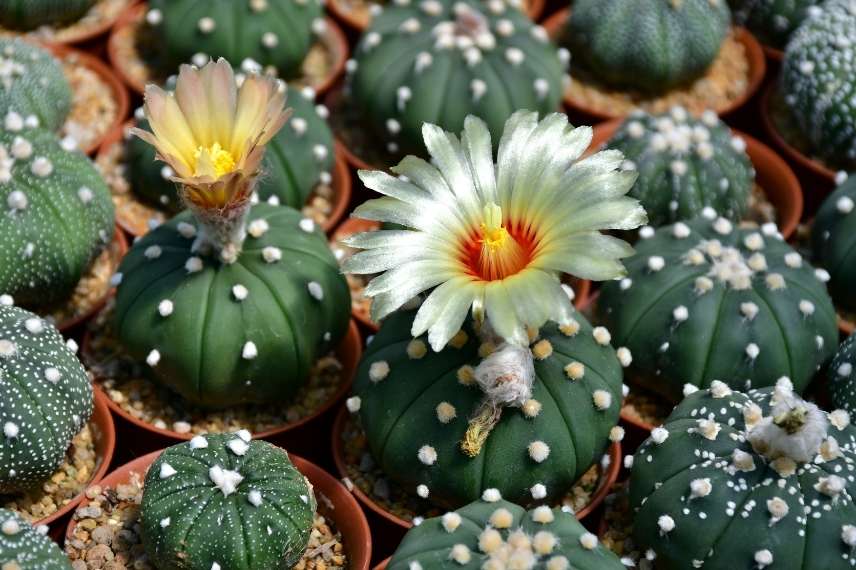
To flower, a cactus needs a cool winter dormancy period
- From early spring, it’s back to normal. To create a semblance of thermal shock, your cacti return to their original spot. This acts as a signal to the cactus that reproduction can resume. Additionally, this is a period with stronger light and longer days. Watering resumes gradually.
- In summer, from May onwards, cacti enjoy warmth and light. You can place them outdoors, in the garden, on a terrace, or balcony. Watering continues, according to each species’ needs.
- Subscribe!
- Contents
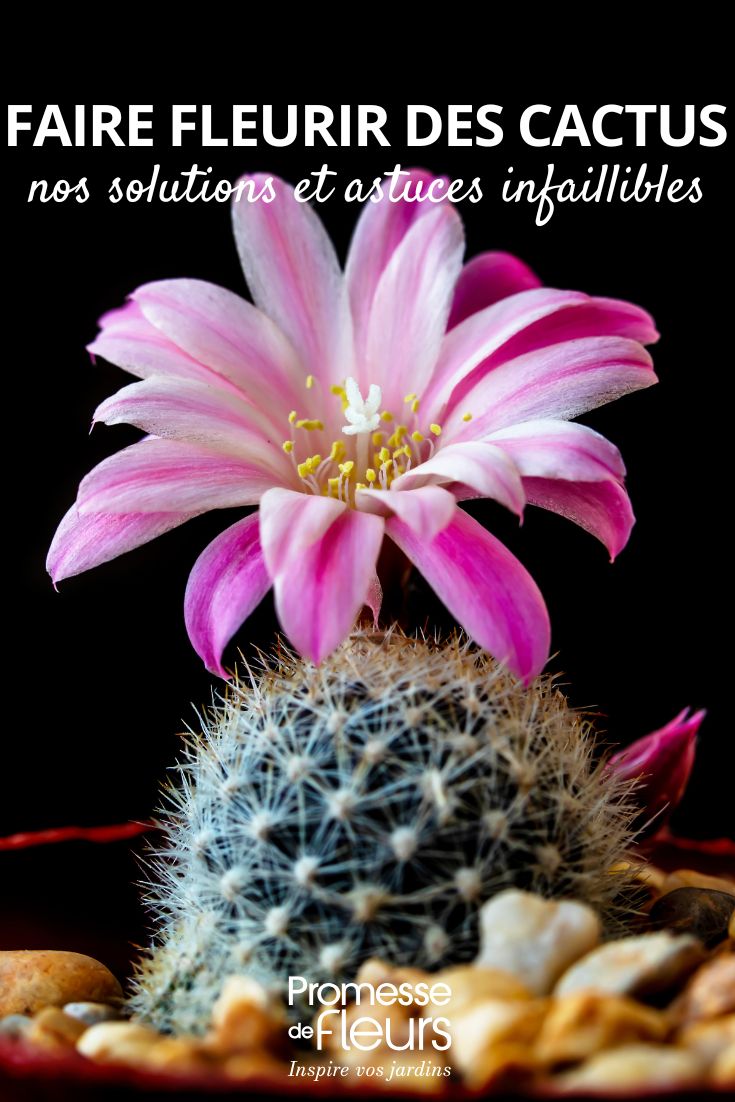































Comments